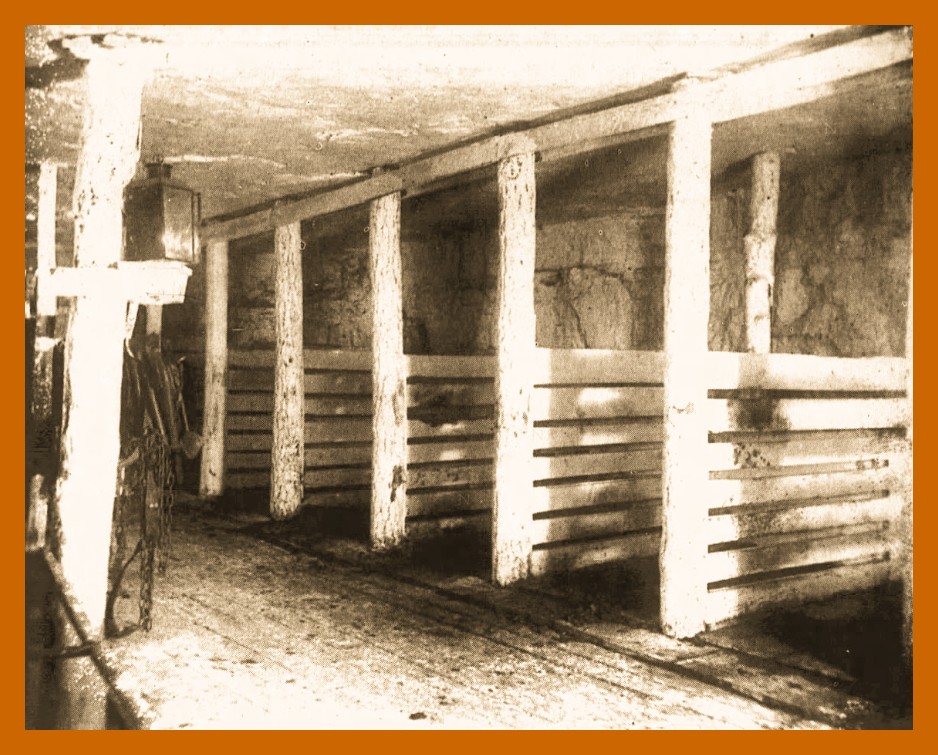A photograph from around 1910 of underground stables for mine mules.
From a series of articles that appeared in the Pottsville Republican and Herald in 1997:
Clarkson Slope
Located 2,200 feet south of the Eagle Hill Slopes, the original opening of the Clarkson Slopes was made by a drift on the Clarkson (Clinton) Vein by Nicholas & Moore in 1825. The slope was mined by Nichols & Moore until 1840, when it was succeeded by Allen & Lawton, which is 1840, sank the slope 250 feet to the first level, when it failed.
In 1841, Aquilla Bolton purchased the colliery and mined the slope gangway until 1842. In 1842, James Oliver leased the colliery, sinking the slope to a lower level to a total of 403 feet. He operated the colliery to 1850, and was succeeded by E. W. McGinnis, who continued the mining to 1852, when he abandoned the colliery.
Michael Maize sank a slope at the eastern end of the colliery that was in confused measures in the hope of driving througn the fault. He was not successful and abandoned the slope after spending considerable money in driving a gangway through the faulty measured.
Cumbola Shaft
The Cumbola Shaft was located on Indian Run, immediately north of the Cumbola Slope. The original opening was made by a drift driven west on the peach Mountain Vein by Charles Potts and Alfred Lawton in 1835.
In 1836, Potts & Lawton sank the shaft 126 feet to the Peach Mountain Vein and drove gangways from the bottom of the shaft east and west to its boundaries. Potts & Lawton operated the colliery to 1840, when it failed.
In 1840, Jones, Williams & Sillyman came into possession of the colliery and operated it to 1844, when Jones retired from the firm. The mining continued under Williams & Sillyman to 1848, when the shaft workings were abandoned as worked out.
The shaft was 220 feet north and in a direct line with the Cumbola Slope. Both slope and shaft were operated by one hoisting engine from a plan of Thomas Ridgeway, a mining engineer.
Total shipment from all Cumbola collieries: 450,000 tons.
Capital investment in 1852 was $35,000.
_______________________________________________
Article by Frank Blase, Historian, Reading Anthracite Company Historical Library, Pottsville Republican & Herald, October 25, 1997. Obtained from Newspapers.com.
Corrections and additional information should be added as comments to this post.
